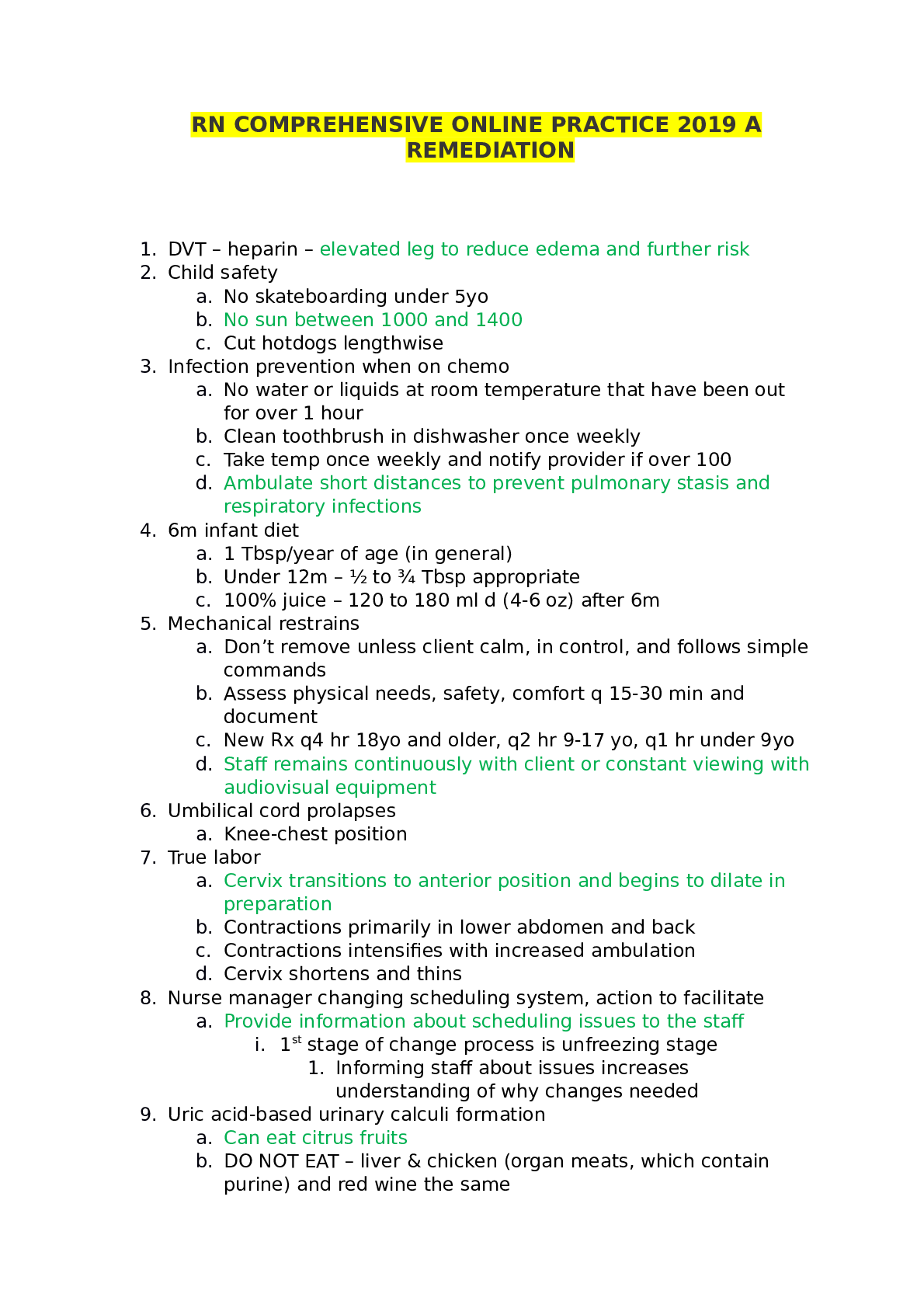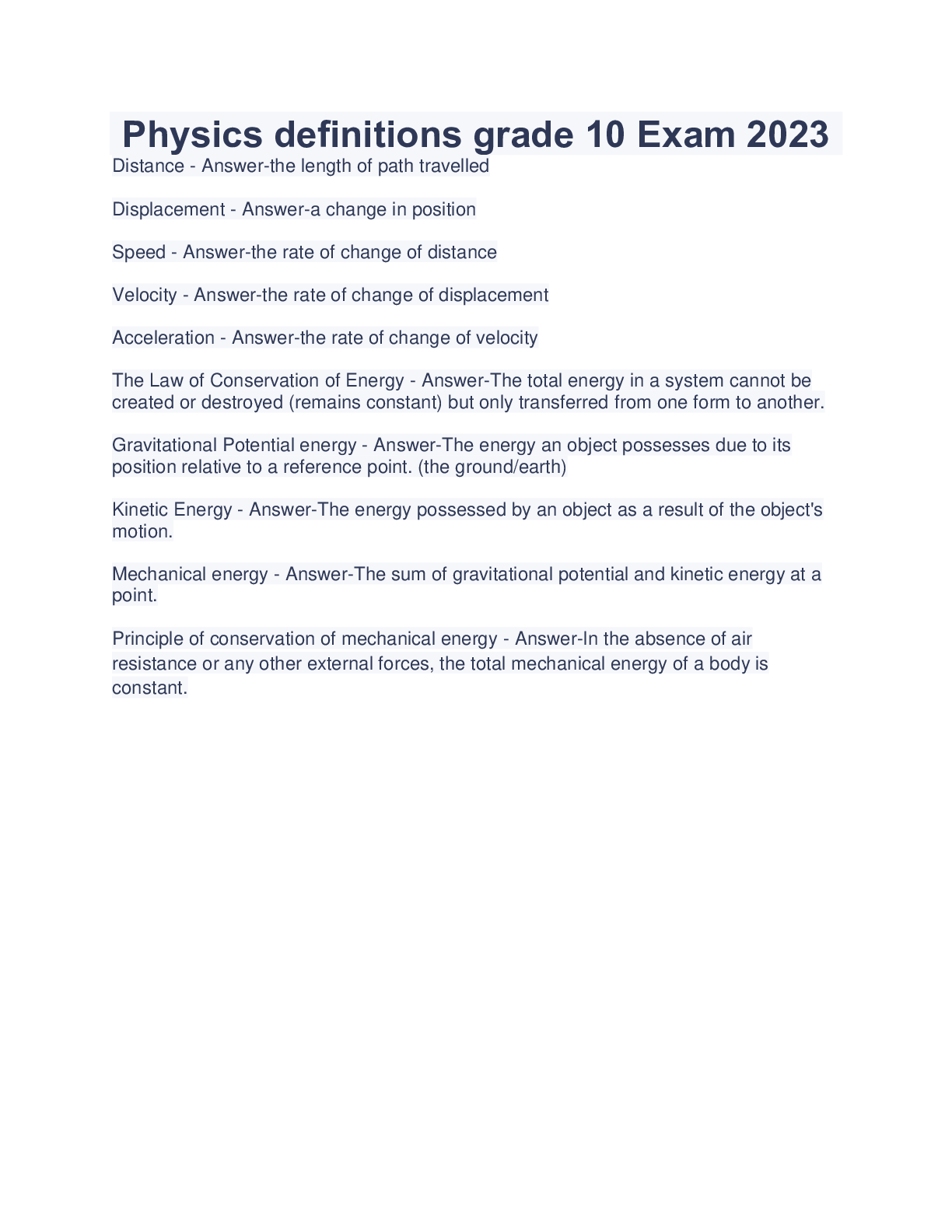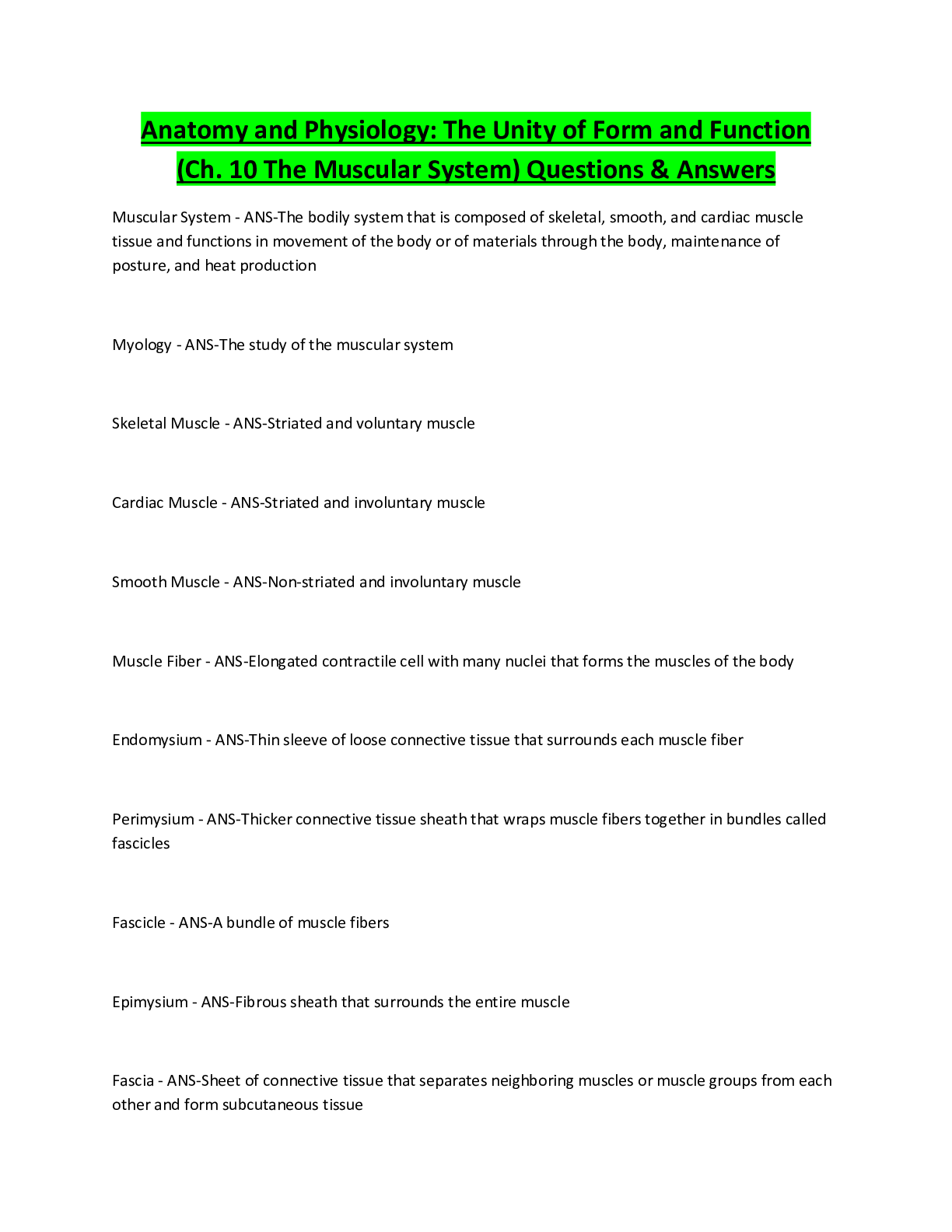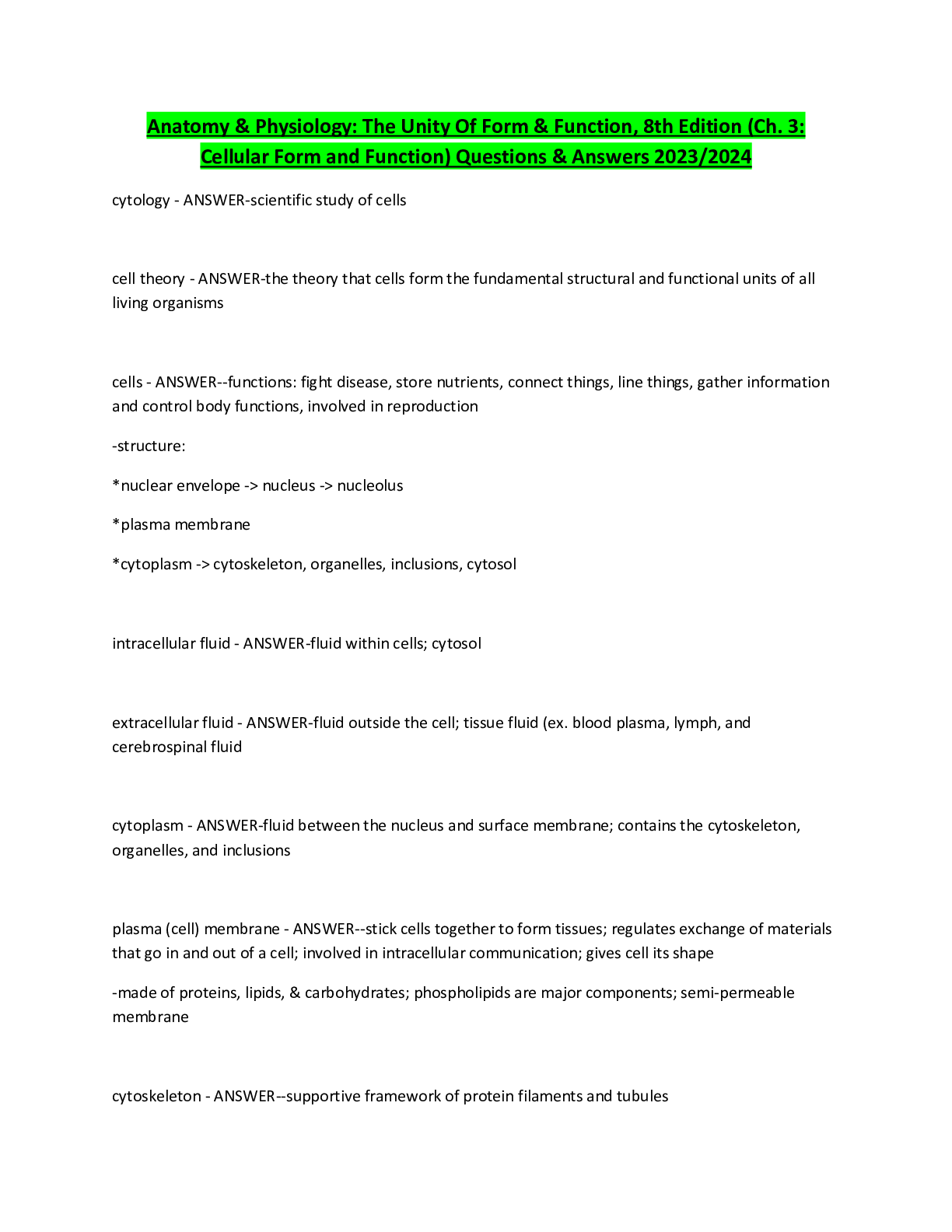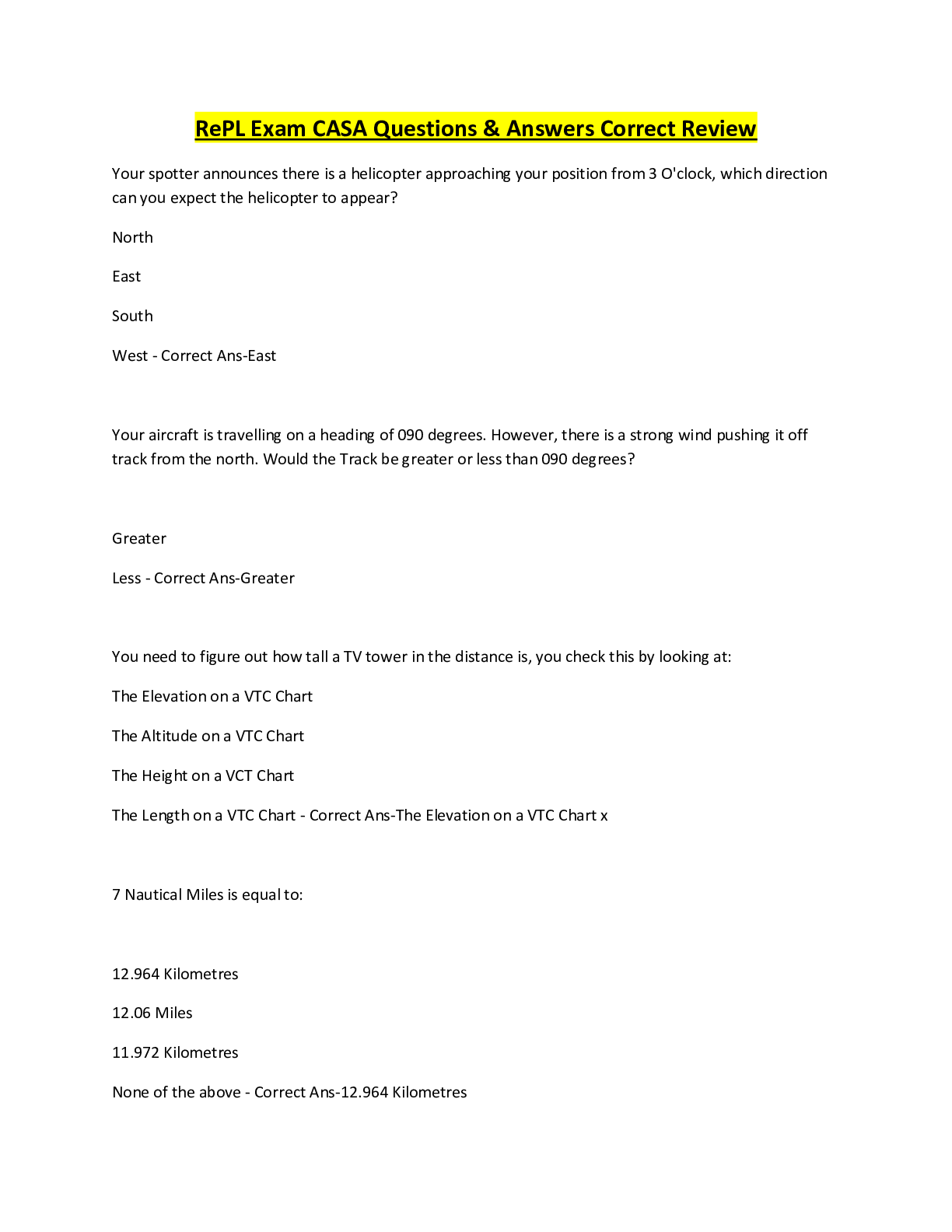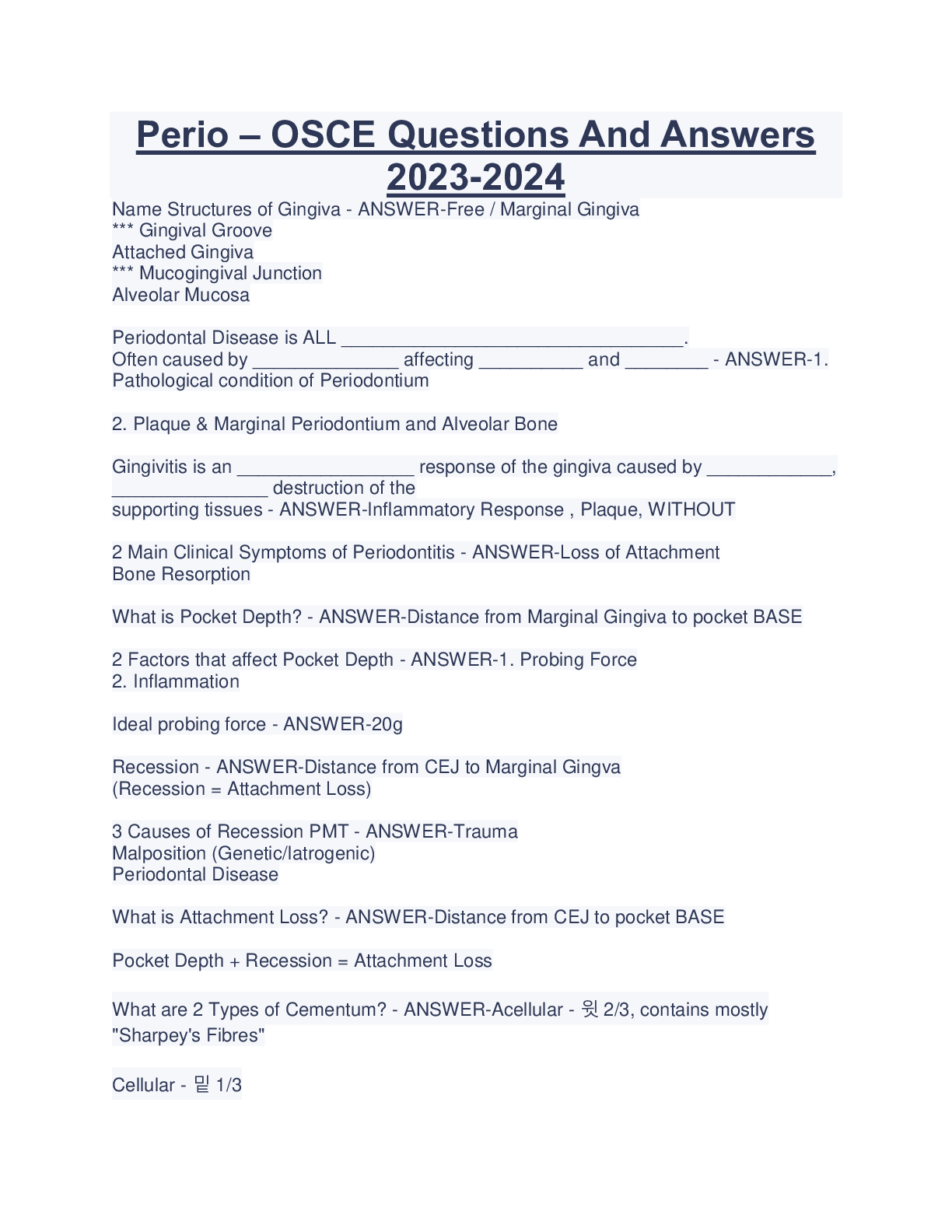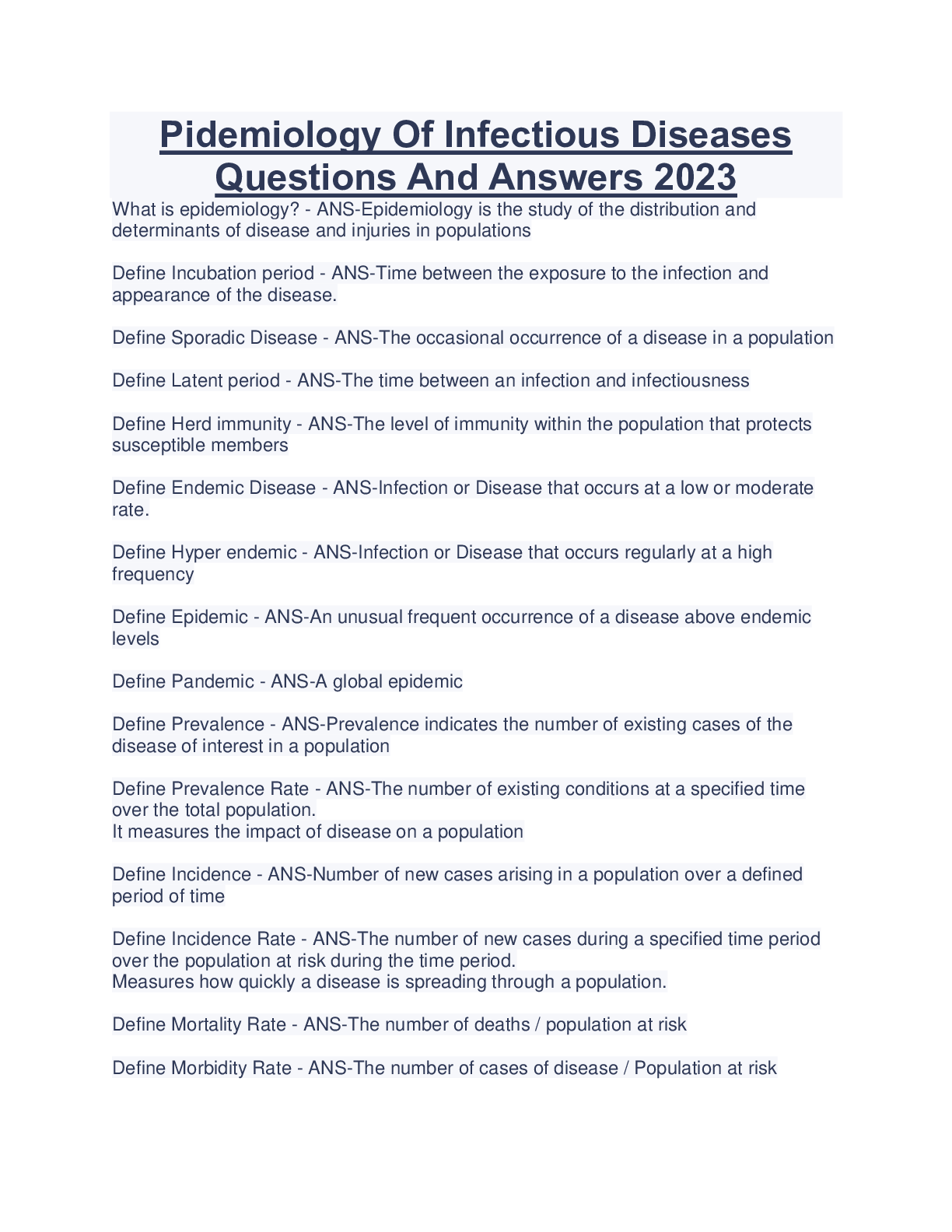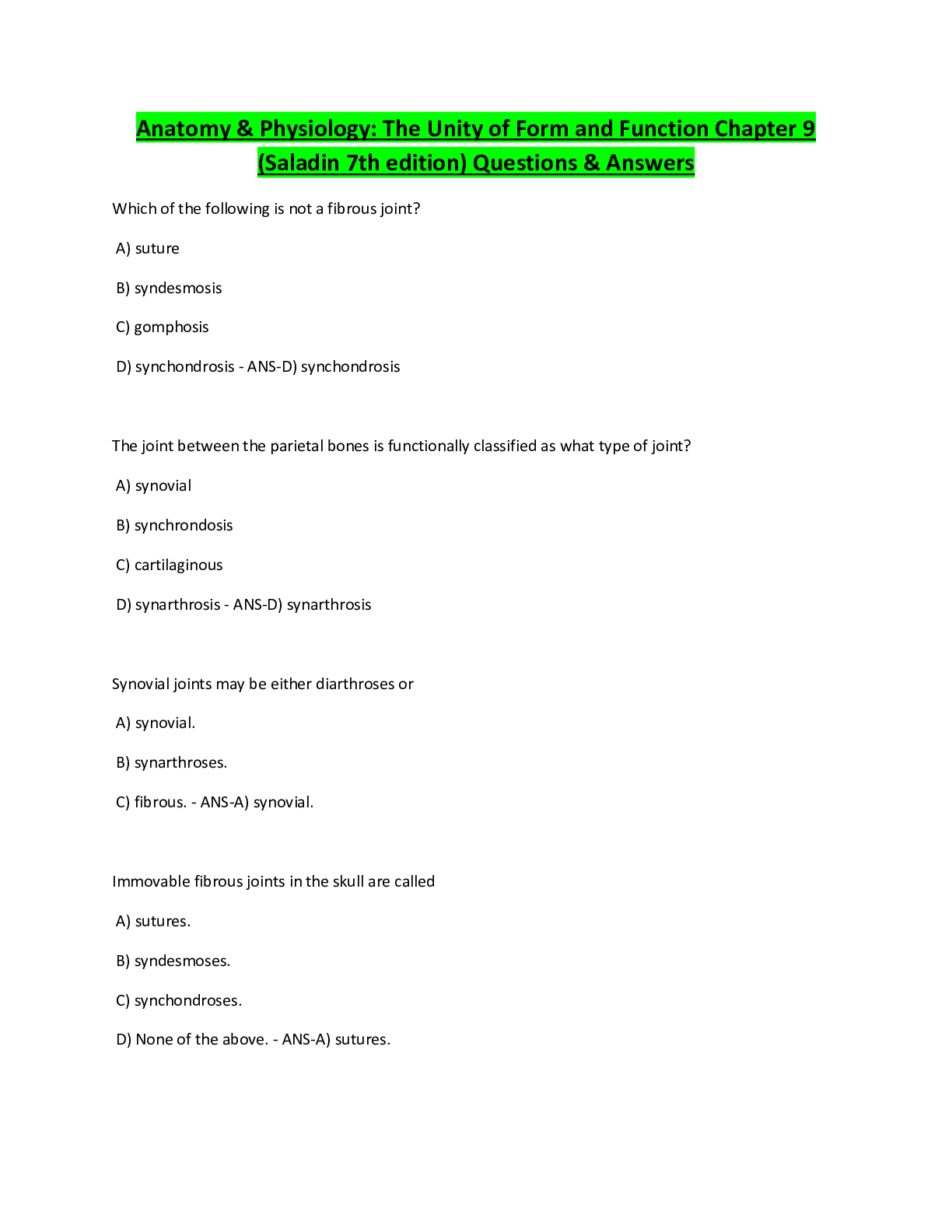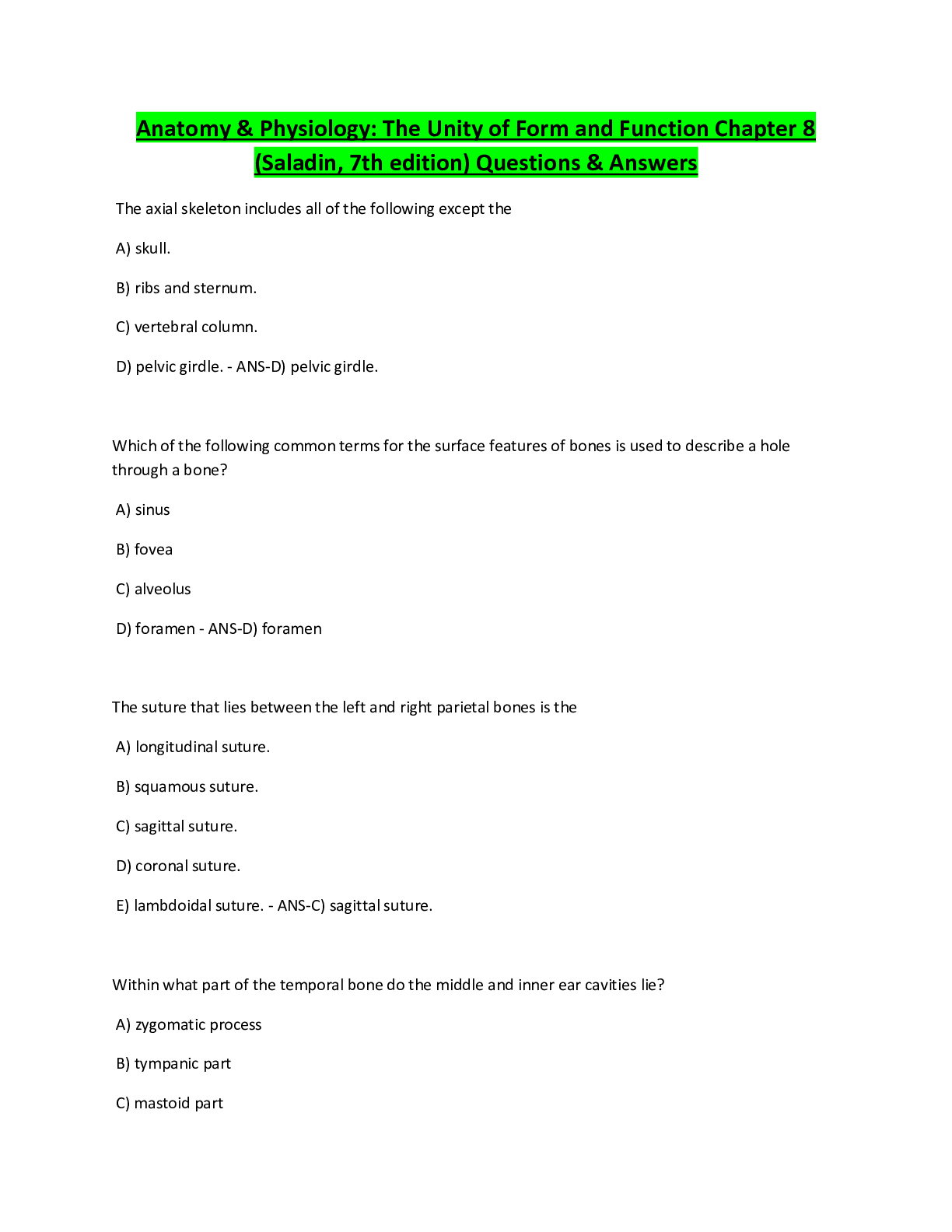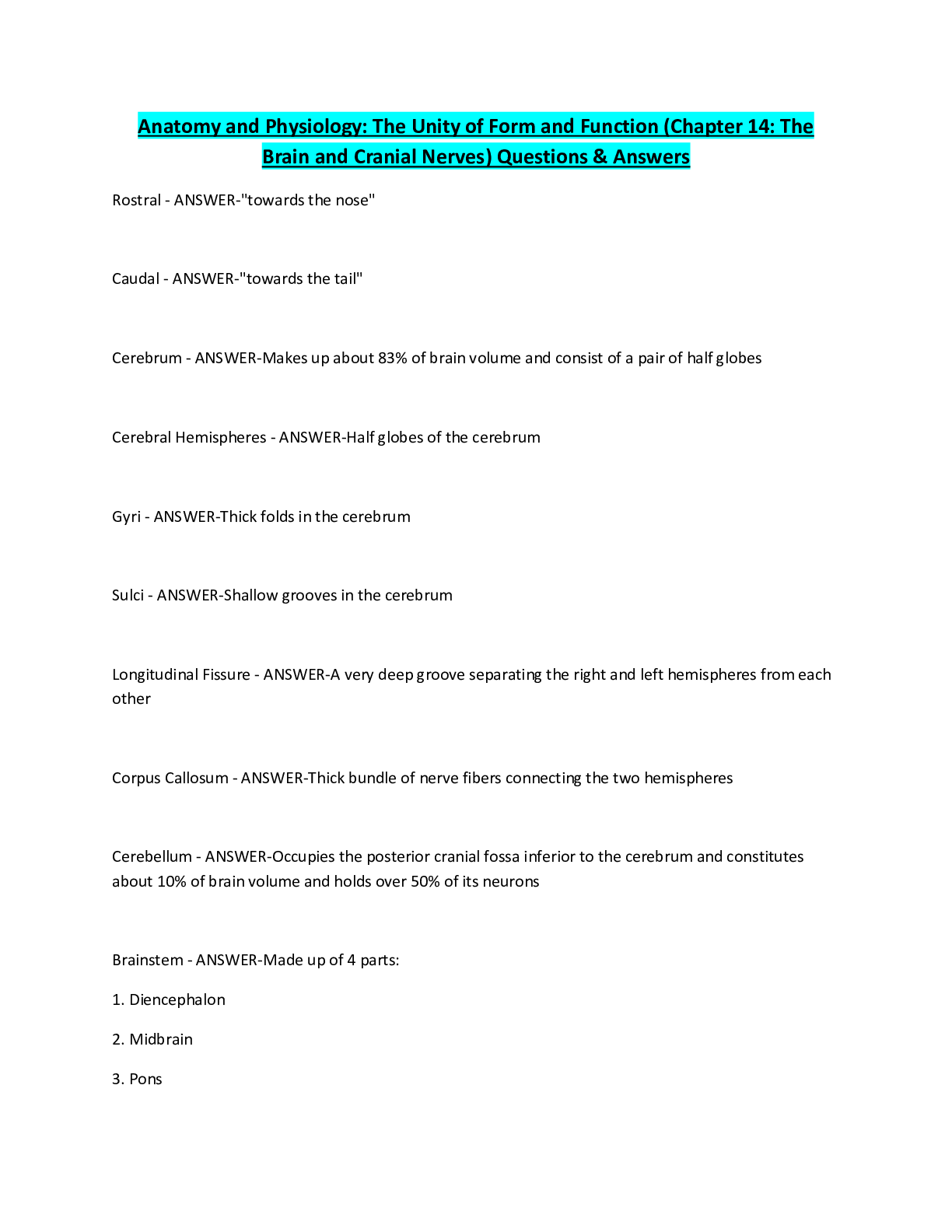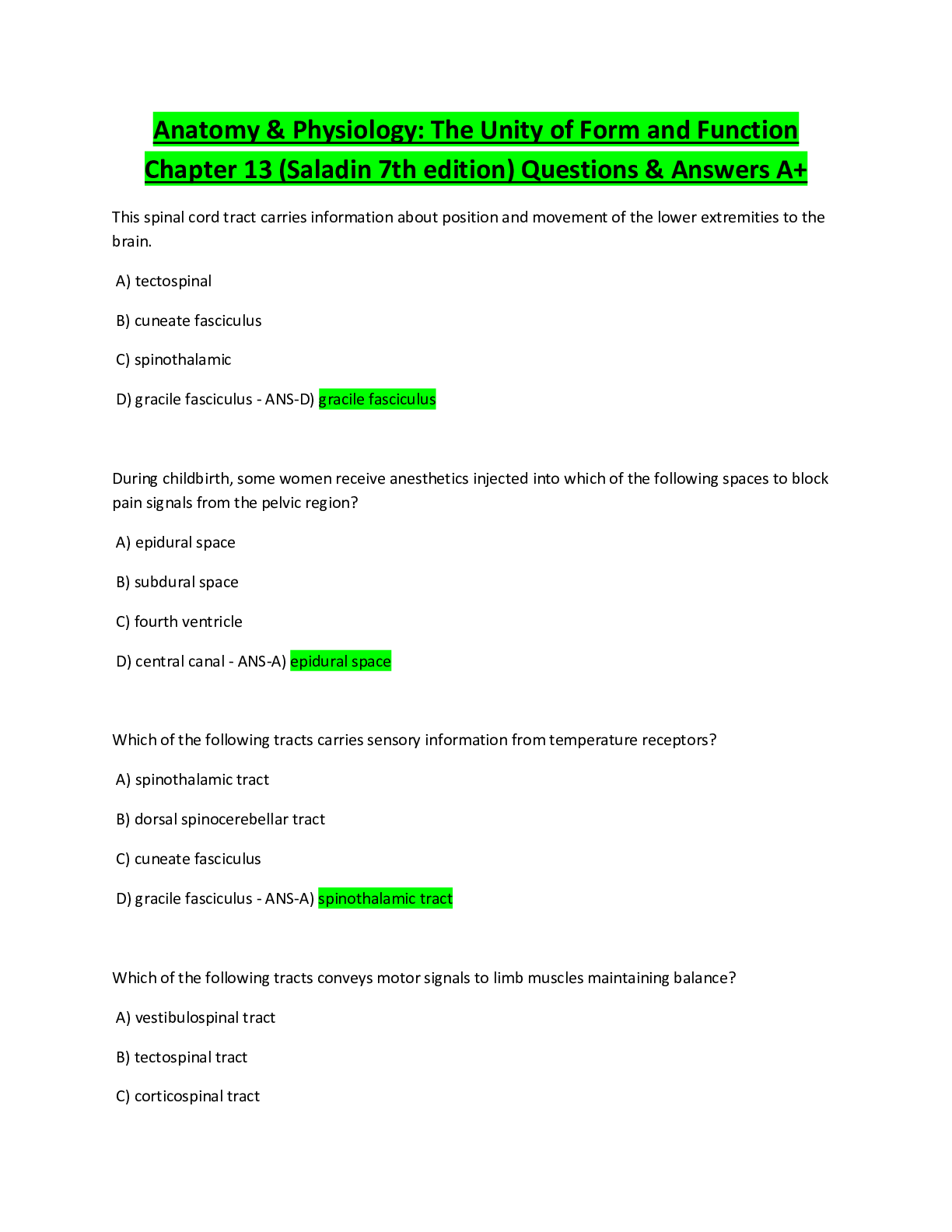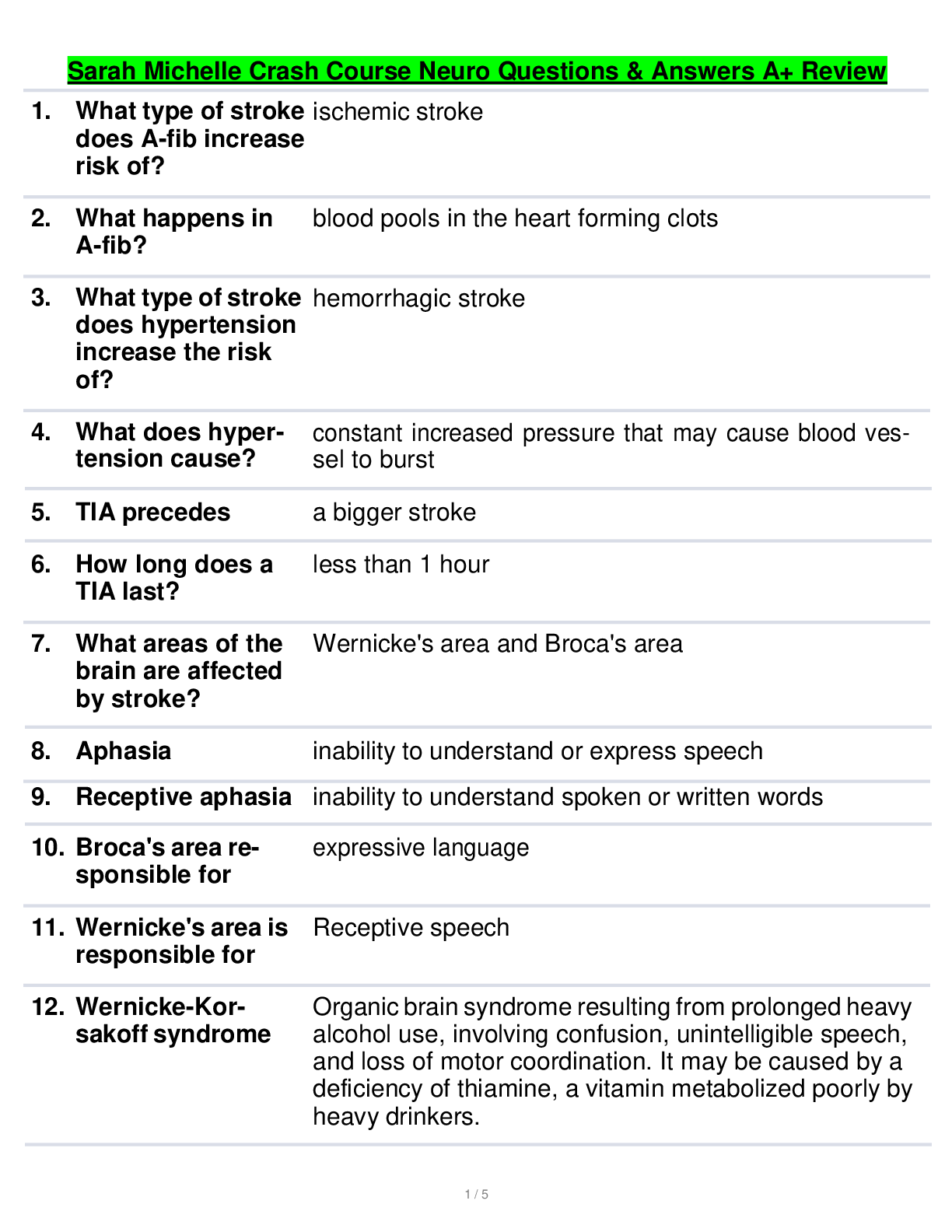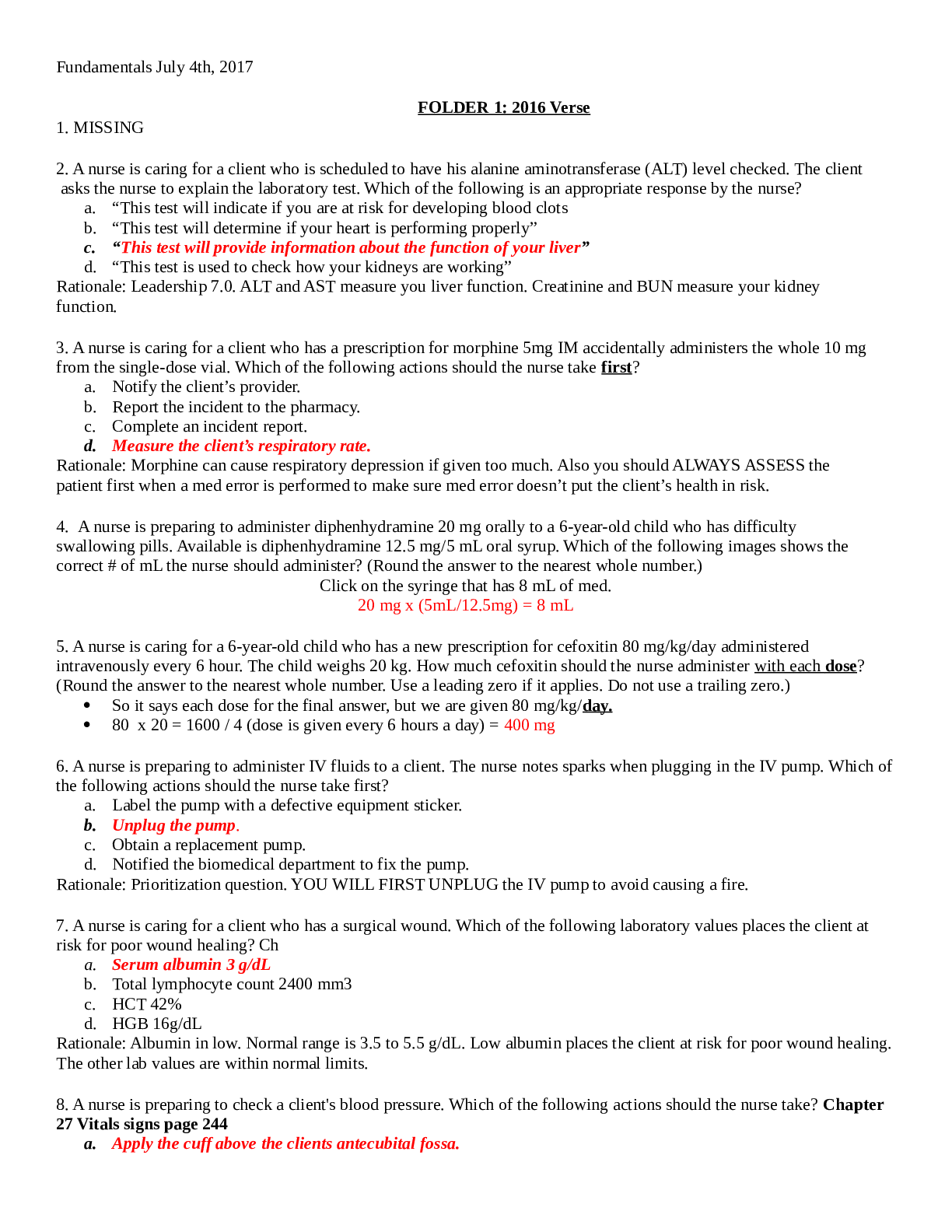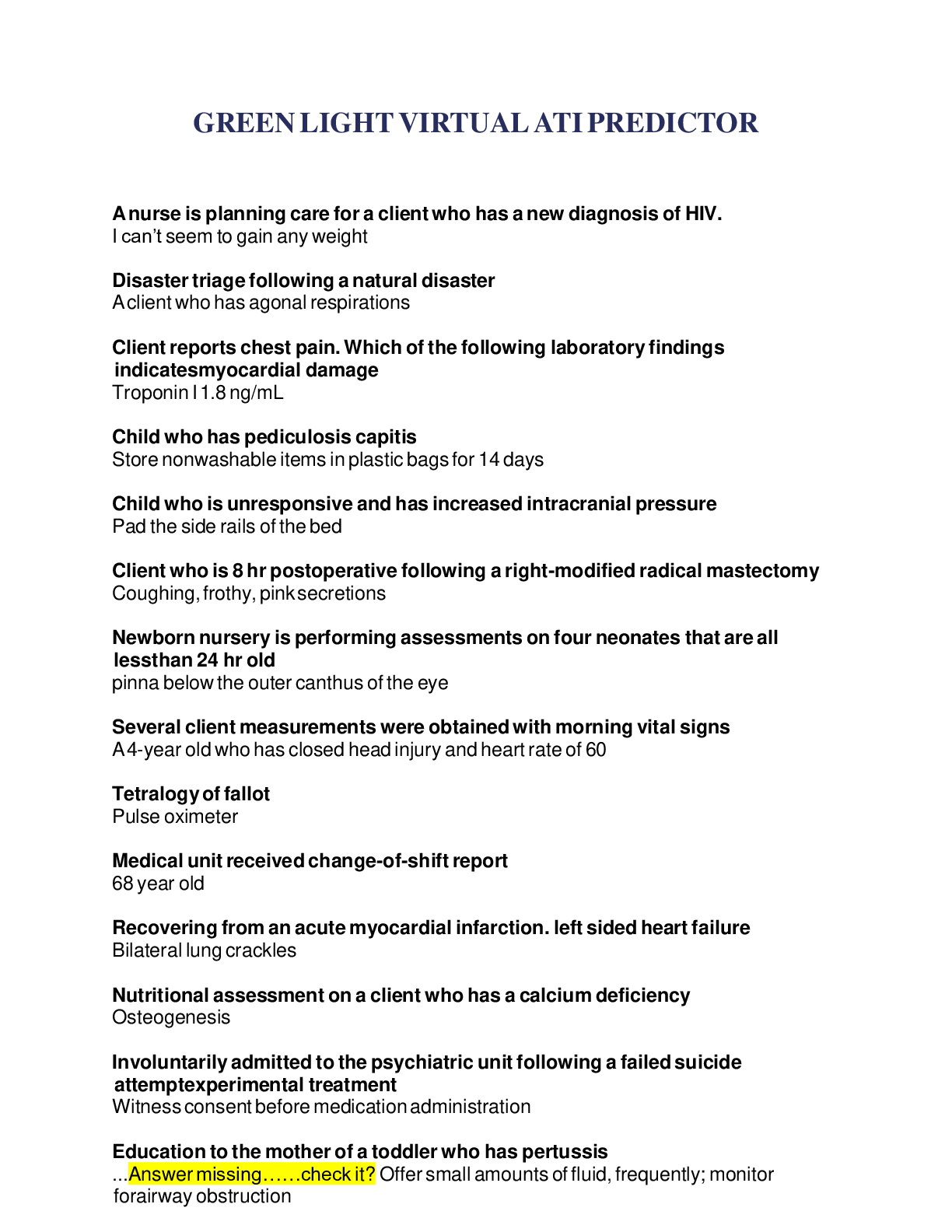*NURSING > QUESTIONS and ANSWERS > Anatomy and physiology the unity of form and function chapter 12 Questions & Answers A+ Review (All)
Anatomy and physiology the unity of form and function chapter 12 Questions & Answers A+ Review
Document Content and Description Below
Anatomy and physiology the unity of form and function chapter 12 Questions & Answers A+ Review endocrine system - ANS-communicates by means of chemical messengers (hormones) secreted into the blo... od nervous system - ANS-employs electrical and chemical means to send messages from cell to cell three basic steps carried out by the nervous system - ANS-- sense organs receive information about changes in the body and external environment, and transmit coded messages to the brain and spinal cord- CNS -CNS processes this information, relates it to past experiences, and determines appropriate response -CNS issues commands to muscles and gland cells to carry out such a response Central Nervous System (CNS) - ANS-brain and spinal cord enclosed by cranium and vertebral column Peripheral Nervous System (PNS) - ANS--All the nervous system except the brain and spinal cord; composed of nerves and ganglia nerve - ANS-a bundle of nerve fibers (axons) wrapped in fibrous connective tissue ganglion - ANS-a knot-like swelling in a nerve where neuron cell bodies are connected; come out from the nerve Peripheral Nervous System (PNS) - ANS-contains sensory and motor divisions each with somatic and visceral subdivisions sensory (afferent) division - ANS-carries signals from receptors to CNS Somatic Sensory Division (afferent) - ANS-carries signals from receptors in the skin, muscles, bones, and joints Visceral Sensory Division (afferent) - ANS-carries signals from the viscera (organs); i.e. heart, lungs, stomach, and urinary bladder motor (efferent) division - ANS-carries signals from CNS to effectors (glands and muscles that carry out the body's response) Somatic motor division (efferent) - ANS-carries signals to skeletal muscles -output produces muscular contraction as well as somatic reflexes- involuntary muscle contractions Visceral Motor Division (efferent) - ANS-(autonomic nervous system) carries signals to glands, cardiac and smooth muscle -Its involuntary responses are visceral reflexes visceral motor division (sympathetic) - ANS--tends to arouse body for action -accelerating heart beat and respiration, while inhibiting digestive and urinary systems visceral motor division (parasympathetic) - ANS--tends to have a calming effect -slows heart rate and breathing -stimulates digestive and urinary systems excitability (irritability) - ANS-respond to environmental changes called stimuli CONTINUES... [Show More]
Last updated: 2 months ago
Preview 1 out of 14 pages
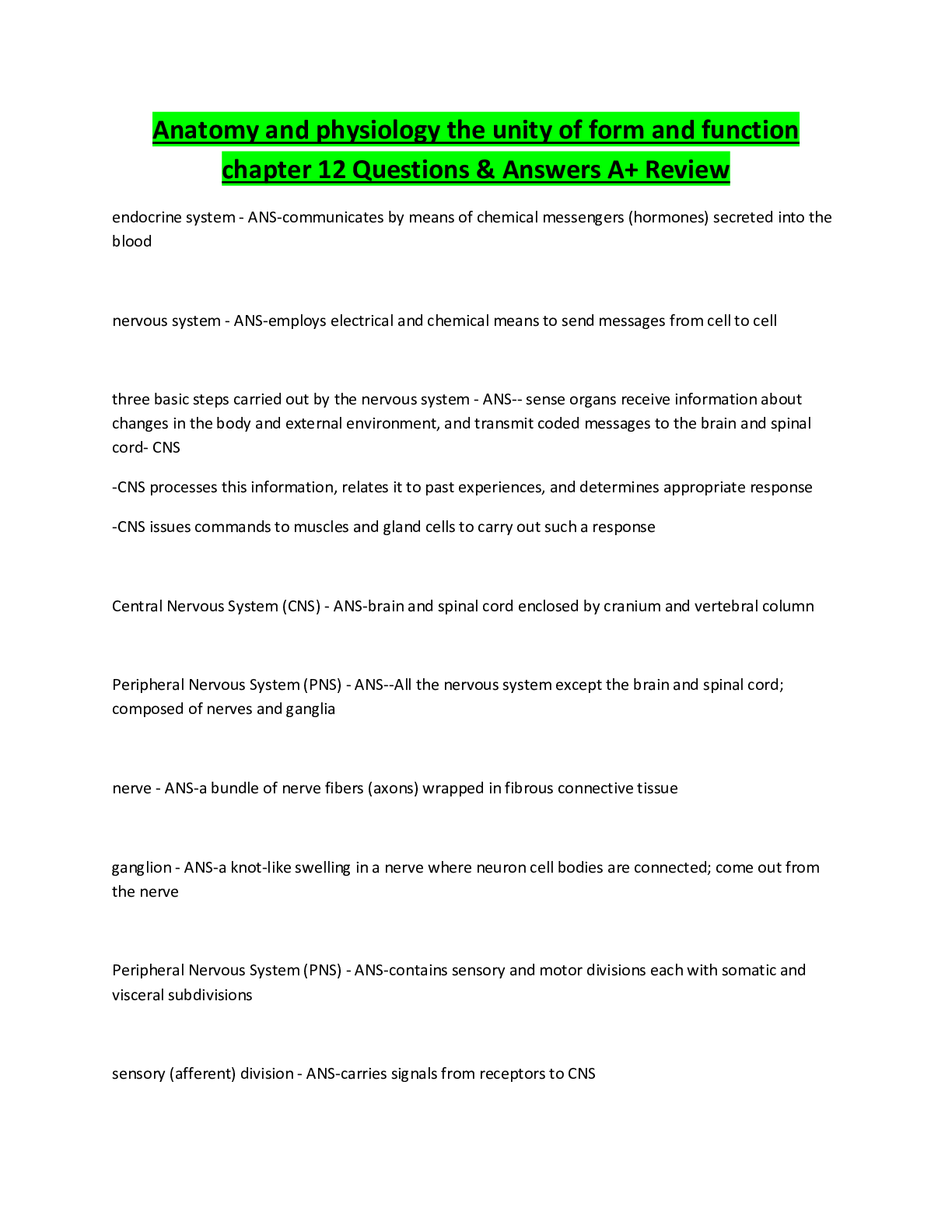
Reviews( 0 )
Document information
Connected school, study & course
About the document
Uploaded On
Feb 06, 2024
Number of pages
14
Written in
Additional information
This document has been written for:
Uploaded
Feb 06, 2024
Downloads
0
Views
16



